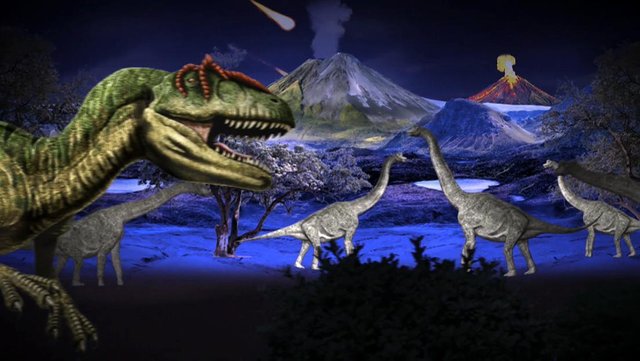History of Dinosaurs

The prehistoric reptiles known as dinosaurs arose during the Middle to Late Triassic Period of the Mesozoic Era, some 230 million years ago. They were members of a subclass of reptiles called the archosaurs (“ruling reptiles”), a group that also includes birds and crocodiles.
Scientists first began studying dinosaurs during the 1820s, when they discovered the bones of a large land reptile they dubbed a Megalosaurus (“big lizard”) buried in the English countryside. In 1842, Sir Richard Owen, Britain’s leading paleontologist, first coined the term “dinosaur.” Owen had examined bones from three different creatures–Megalosaurus, Iguanadon (“iguana tooth”) and Hylaeosaurus (“woodland lizard”). Each of them lived on land, was larger than any living reptile, walked with their legs directly beneath their bodies instead of out to the sides and had three more vertebrae in their hips than other known reptiles. Using this information, Owen determined that the three formed a special group of reptiles, which he named Dinosauria. The word comes from the ancient Greek word deinos (“terrible”) and sauros (“lizard” or “reptile”).
Did you know? Despite the fact that dinosaurs no longer walk the Earth as they did during the Mesozoic Era, unmistakable traces of these enormous reptiles can be identified in their modern-day descendants: birds.
Since then, dinosaur fossils have been found all over the world and studied by paleontologists to find out more about the many different types of these creatures that existed. Scientists have traditionally divided the dinosaur group into two orders: the “bird-hipped” Ornithischia and the “lizard-hipped” Saurischia. From there, dinosaurs have been broken down into numerous genera (e.g. Tyrannosaurus or Triceratops) and each genus into one or more species. Some dinosaurs were bipedal, which means they walked on two legs. Some walked on four legs (quadrupedal), and some were able to switch between these two walking styles. Some dinosaurs were covered with a type of body armor, and some probably had feathers, like their modern bird relatives. Some moved quickly, while others were lumbering and slow. Most dinosaurs were herbivores, or plant-eaters, but some were carnivorous and hunted or scavenged other dinosaurs in order to survive.
